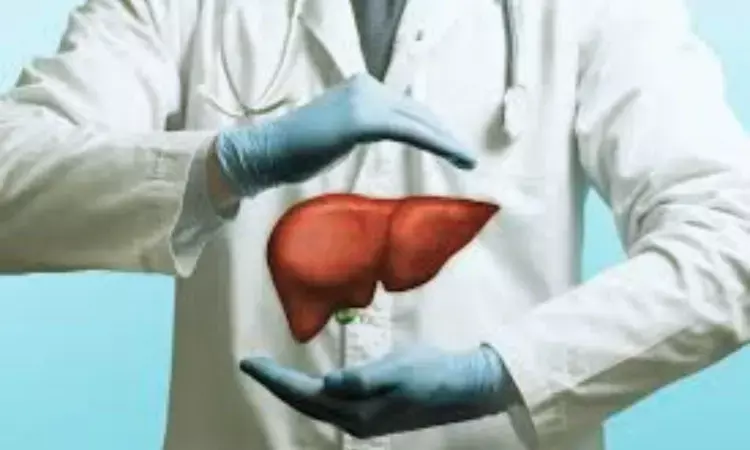- Home
- Medical news & Guidelines
- Anesthesiology
- Cardiology and CTVS
- Critical Care
- Dentistry
- Dermatology
- Diabetes and Endocrinology
- ENT
- Gastroenterology
- Medicine
- Nephrology
- Neurology
- Obstretics-Gynaecology
- Oncology
- Ophthalmology
- Orthopaedics
- Pediatrics-Neonatology
- Psychiatry
- Pulmonology
- Radiology
- Surgery
- Urology
- Laboratory Medicine
- Diet
- Nursing
- Paramedical
- Physiotherapy
- Health news
- Fact Check
- Bone Health Fact Check
- Brain Health Fact Check
- Cancer Related Fact Check
- Child Care Fact Check
- Dental and oral health fact check
- Diabetes and metabolic health fact check
- Diet and Nutrition Fact Check
- Eye and ENT Care Fact Check
- Fitness fact check
- Gut health fact check
- Heart health fact check
- Kidney health fact check
- Medical education fact check
- Men's health fact check
- Respiratory fact check
- Skin and hair care fact check
- Vaccine and Immunization fact check
- Women's health fact check
- AYUSH
- State News
- Andaman and Nicobar Islands
- Andhra Pradesh
- Arunachal Pradesh
- Assam
- Bihar
- Chandigarh
- Chattisgarh
- Dadra and Nagar Haveli
- Daman and Diu
- Delhi
- Goa
- Gujarat
- Haryana
- Himachal Pradesh
- Jammu & Kashmir
- Jharkhand
- Karnataka
- Kerala
- Ladakh
- Lakshadweep
- Madhya Pradesh
- Maharashtra
- Manipur
- Meghalaya
- Mizoram
- Nagaland
- Odisha
- Puducherry
- Punjab
- Rajasthan
- Sikkim
- Tamil Nadu
- Telangana
- Tripura
- Uttar Pradesh
- Uttrakhand
- West Bengal
- Medical Education
- Industry
Pitt study identifies potential new treatment for liver fibrosis

New research from the University of Pittsburgh School of Pharmacy sheds light on the processes that lead to liver fibrosis and suggests a novel treatment approach for this common and serious condition.
Led by senior author Wen Xie, M.D., Ph.D., professor and Joseph Koslow endowed chair of the Department of Pharmaceutical Sciences and co-first authors Hung-Chun Tung, graduate student, and Jong-Won Kim, Ph.D., postdoctoral fellow, the study published today in Science Translational Medicine.
In this Q&A, Xie elaborates on the study’s findings and explains why new diagnostic tools and treatment options for liver fibrosis are greatly needed.
What is liver fibrosis and who is at risk?
Liver fibrosis is the formation of tissue scars in the liver due to chronic inflammation and injury. Over time, fibrosis can impair liver function and may lead to cirrhosis or even liver cancer. Those at risk include individuals with chronic viral hepatitis, obesity, diabetes and excessive alcohol use. Early detection and intervention are crucial to prevent progression to more severe liver disease.
What are the current treatments for liver fibrosis?
Currently there are no FDA-approved drugs that specifically treat liver fibrosis. The only treatment option is to treat diseases that cause liver fibrosis in the first place, such as hepatitis, obesity, type 2 diabetes and alcoholic liver disease. Preventive measures include avoiding excessive alcohol, maintaining a healthy body weight and early screening for liver diseases to prevent fibrosis from advancing to cirrhosis or liver failure.
What are hepatic stellate cells (HSCs), and how do they contribute to liver fibrosis?
HSCs are a unique cell type in the liver. When the liver is injured or inflamed, HSCs become activated and produce excess collagen and other extracellular matrix proteins. The accumulation of collagen and other extracellular matrix proteins leads to scar tissue formation and liver fibrosis.
What were the main findings of this study?
This study identified the enzyme CYP1B1 as a biomarker and predictor of HSC activation and liver fibrosis in both patients and mice. Inhibition of CYP1B1 led to the accumulation of a sugar called trehalose, which we showed for the first time that trehalose has anti-fibrotic activity. Moreover, treatment of mice with trehalose, its analog lactotrehalose or CYP1B1 inhibitor protected mice from getting liver fibrosis.
It was surprising to identify a liver function of CYP1B1, an enzyme traditionally known for its functions outside the liver. Although the concentration of CYP1B1 in the whole liver is not high, this enzyme is uniquely and abundantly present in HSCs and thus plays an important role in HSC activation and liver fibrosis.
What are the clinical implications of these findings?
Liver fibrosis is a common, potentially deadly and costly liver disease that lacks FDA-approved drugs. Our findings are clinically important because we identified CYP1B1 as a predictor of HSC and liver fibrosis in patients, which may help with the early diagnosis of this disease. More importantly, we found that trehalose and lactotrehalose are potential novel drugs that could be used to treat liver fibrosis in the future.
What’s next for this research?
Future and more comprehensive human studies are needed to confirm the role of CYP1B1 in human liver fibrosis. The utility of trehalose or lactotrehalose in the treatment of human liver fibrosis also warrants future studies.
Reference:
Hung-Chun Tung et al. ,Inhibition of heme-thiolate monooxygenase CYP1B1 prevents hepatic stellate cell activation and liver fibrosis by accumulating trehalose.Sci. Transl. Med.16,eadk8446(2024).DOI:10.1126/scitranslmed.adk8446
Dr Kamal Kant Kohli-MBBS, DTCD- a chest specialist with more than 30 years of practice and a flair for writing clinical articles, Dr Kamal Kant Kohli joined Medical Dialogues as a Chief Editor of Medical News. Besides writing articles, as an editor, he proofreads and verifies all the medical content published on Medical Dialogues including those coming from journals, studies,medical conferences,guidelines etc. Email: drkohli@medicaldialogues.in. Contact no. 011-43720751


